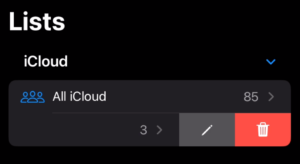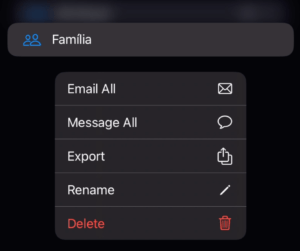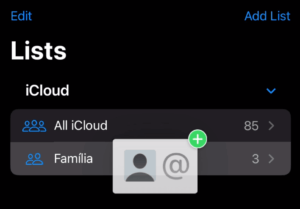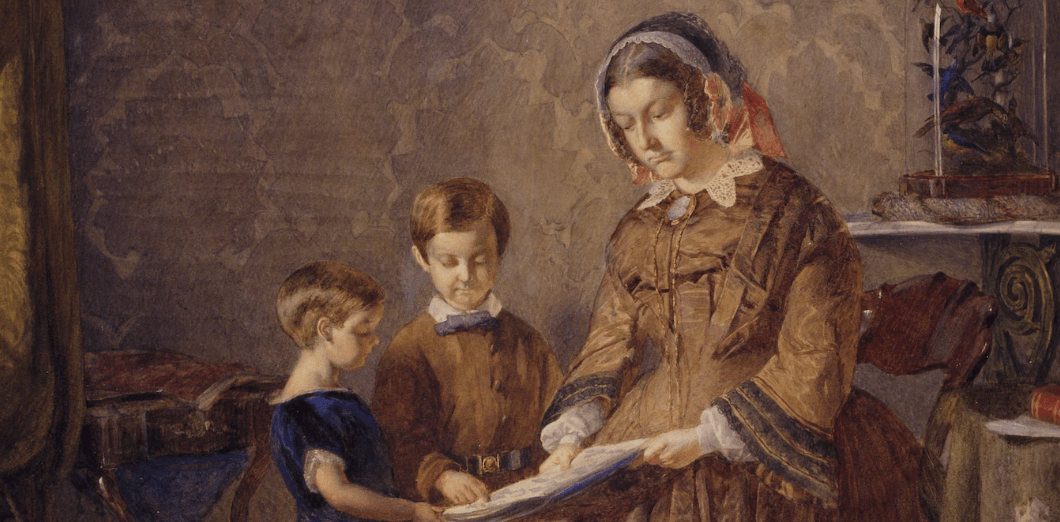Hello Apple Lovers, Leo here. Today we will talk about new iOS 16 Contacts App features.
The Contacts app on an Apple device is a built-in application that allows you to store and manage your contact information. You can add, edit, and delete contact entries, and you can also group contacts together in lists or “groups.”
The App is basically like your own personal little black book, but instead of being made of paper and filled with phone numbers scribbled in pen, it’s a fancy digital version on your Apple device.
You can add all your favorite people to it, along with their various forms of contact information like phone numbers, addresses, and email addresses. And the best part? No more rifling through your bag to find that scrap of paper with your friend’s number on it – it’s all right there at your fingertips.
Plus, you can even create groups for all your friends, family members, and co-workers, so you can easily keep track of everyone and stay organized. Basically, it’s like having a super-efficient personal assistant, but without having to pay their salary.
Not only Contacts has new features, but macOS Ventura Email also has plenty of them you can check there after reading the contact features.
New Phone App Features for Contacts in iOS 16
It’s time to explore the Contacts app on your iPhone if you haven’t done more than enter basic contact information. With all the capabilities described below, you’ll actually want to use it more. The new features listed below function with iPadOS 16.1 and later. Although many of these were already available on prior macOS versions, they will also function on macOS 13 or later.
1- Managing Your Contact List
Now you have direct access to renaming your contact list, you need to drag the list to the left and the pencil option will appear.
Check the image below:

2 – Using Memoji as Contact Photo
It’s nothing new to use a Memoji as a contact’s photo, but there were previously only 12 stock postures in addition to a custom stance. Any Memoji sticker is acceptable for a contact’s photo on iOS 16 and later, plus there are three completely new positions that are only available for contact profile pictures.
From Contacts, Phone, Messages, or any other app that allows you to see and modify contacts, open the contact’s card. Under the contact’s picture or monogram, click “Edit,” then “Edit” or “Add Photo.” Touch “Next,” choose the Memoji sticker, resize it as necessary, tap “Choose,” and then tap “Done” to save it.

3 – Merging duplicate contacts
Since at least 2005, the Contacts app on macOS has had the ability to identify and combine duplicate contacts, and iOS 16 now extends it to the iPhone. The All Contacts view will show a Duplicates Found notification at the top if there are duplicate entries.
To see a contact’s duplicate information, tap “View Duplicates,” and then choose a contact. You can manage each contact’s data separately, merge it, ignore it, or both.

credit: Image
4 – New Actions for the List as a Whole
To share a list, long-press it in the main Lists screen and select “Export.” The standard sharing options are now available, including AirDrop, messaging, emailing, and saving. To hide any contact information you don’t wish to share, press “Filter Fields” at the top of the sheet. The output file will be a virtual card with the extension.vcf (virtual contact file).
Swipe right on the list in the main Lists display and press the message button to open a new draft in Messages with all of the list’s contacts included. There is no option to select “Message All” from within the list itself, but you can long-press the list and select it from the fast actions menu.
A whole contact group can be rapidly emailed using the Mail app on iOS 16 and later. Swipe right on the list in the main Lists display, then press the email button to open a new draft with the list’s contacts already included. Additionally, you can long-press the list and select “Email All” from the available quick actions, or you can tap the email button directly on the list.

5 – Share Filtered Contact Cards
Before iOS 16, anytime you shared a specific contact, the accompanying vCard would contain all of that contact’s information. You can now deselect any information you don’t wish to share by tapping “Filter Fields” at the top of the share sheet.


Now just filter the info, and you are done!
6 – Manage Lists Dragging and Dropping Contacts
With iOS 16 and later, you may drag and drop contacts into lists or even other apps to add them more quickly.
Once the floating card is visible, press the contact and then take it away. Keep holding the card while moving it with a different finger to the desired location.

And that was the tips for today!
Summary – New iOS Features for Apple Contact App
As technology has advanced, so has the Contacts feature in the Phone app. It’s now more powerful than ever before, and can help you manage your contacts with ease. Whether you have a few close friends or a large network of professional connections, the Contacts app is a great tool for keeping track of everyone you know.
One of the most useful features of the app is the ability to create groups. You can create a group for your family, your co-workers, your classmates, or any other group of people you need to stay in touch with. This can be a huge time saver, as you can send a message or make a call to an entire group at once, rather than having to individually contact each person.
Overall, the Contacts app is an incredibly useful tool that can help you manage your relationships more efficiently and effectively. Whether you’re using it to stay in touch with friends and family, or to manage your professional connections, it’s a valuable resource that’s worth taking advantage of.
Fellow Apple Lovers, that’s all. I hope you liked reading this article as much as I enjoyed writing it.
If you want to support this blog you can Buy Me a Coffee or say hello on Twitter. I’m available on LinkedIn or send me an e-mail through the contact page.
You can likewise sponsor this blog so I can get my blog free of ad networks.
Thanks for the reading and… That’s all folks.
Image credit: Featured Image






